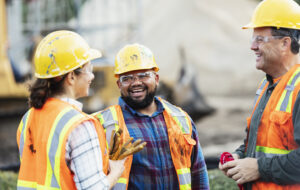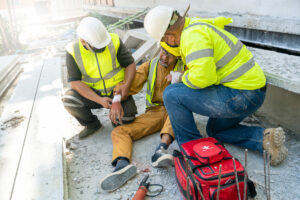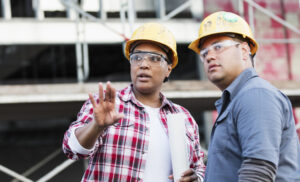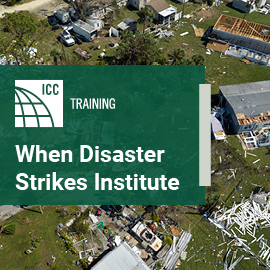
How off-site construction can contribute to a more diverse workforce
Off-site construction can contribute to a more diverse workforce and help crews remain viable during labor shortages
Off-site construction offers multiple advantages to site builds. Crews don’t need to worry about inclement weather causing delays or warping studs, leading to costly replacement. They never need to fear leaving a necessary tool behind, either, as their equipment remains safely protected from thieves.
However, one more subtle advantage can help crews remain viable during labor shortages. Here’s how off-site construction can contribute to a more diverse workforce.
Increased specialty expertise
Today’s technology enables construction crews to perform tasks with higher accuracy and quality than ever before. Specialized machines reduce or eliminate the human capacity for error, making lines straighter and more level and joints more tightly sealed.
 However, this specialty equipment requires trained workers to operate and maintain it. Such expertise doesn’t develop overnight. For example, a heavy equipment operator might only undergo a few months of formal training – but that’s by design. To learn the intricacies of each machine, you need to operate it in the field. The best folks may be nearing retirement and reluctant to undergo the rigors of fieldwork, but a factory position may suit them fine.
However, this specialty equipment requires trained workers to operate and maintain it. Such expertise doesn’t develop overnight. For example, a heavy equipment operator might only undergo a few months of formal training – but that’s by design. To learn the intricacies of each machine, you need to operate it in the field. The best folks may be nearing retirement and reluctant to undergo the rigors of fieldwork, but a factory position may suit them fine.
Lacking sufficient experts to operate such machinery can cost companies considerable cash. Those non-productive hours add up, resulting in thousands in lost revenue every year. Improving equipment productivity requires crew members who understand each piece inside and out, including how to maintain it. If a vital component of machinery malfunctions, it can slow the entire assembly line, causing delays that lead to frustrated clients and lost revenue.
When the need for such repairs arises at an offsite construction site, experts can diagnose and repair problems without dealing with Mother Nature potentially complicating matters. For example, delicate parts may need to remain dust-free, but blowing winds in desert regions can introduce contaminants.
It can be hazardous to disassemble some parts in bright sunlight – for example, certain batteries can explode when exposed to light and heat. Off-site construction allows repairs to take place in a climate-controlled setting, improving safety for all workers.
More accommodating working conditions
Construction isn’t historically a friendly field for folks with disabilities. However, off-site construction contributes to workforce diversity by opening up opportunities for individuals who might enjoy the labor but not be able to tolerate field conditions.
 For example, individuals with postural orthostatic hypotension syndrome (POTS) often have to avoid temperature extremes, particularly heat. This disorder impacts the autonomic nervous system, causing soaring heart rates, dizziness and fainting. Standing in direct sunlight for eight or more hours daily could cause hazardous attacks, but performing the same work in climate-controlled conditions is a reasonable accommodation.
For example, individuals with postural orthostatic hypotension syndrome (POTS) often have to avoid temperature extremes, particularly heat. This disorder impacts the autonomic nervous system, causing soaring heart rates, dizziness and fainting. Standing in direct sunlight for eight or more hours daily could cause hazardous attacks, but performing the same work in climate-controlled conditions is a reasonable accommodation.
Furthermore, folks with mobility impairments also benefit from off-site construction. It’s challenging, if not downright impossible, to push a wheelchair around most job sites. However, these factory settings feature smooth floors where individuals who use aids can easily maneuver.
Finally, such off-site facilities make it easier for people with disabilities to care for their basic human needs. Most worksite personal portable toilets (or “job johnnies”) don’t meet ADA requirements for restroom door width, which is a problem for folks who use mobility aids. Off-site construction sites have compliant bathrooms and better sanitation – an important detail in today’s pandemic era.
Fewer field-related hazards
 Off-site construction also contributes to a more diverse workforce and addresses the labor shortage by minimizing hazards often unavoidable in the field. Therefore, it attracts folks who might otherwise stay away from such career fields out of fear of injury.
Off-site construction also contributes to a more diverse workforce and addresses the labor shortage by minimizing hazards often unavoidable in the field. Therefore, it attracts folks who might otherwise stay away from such career fields out of fear of injury.
Such concerns aren’t unwarranted. For example, nearly a quarter of U.S. children live in single-parent households. If the sole provider suffers a worksite injury, it could rob them of their ability to nurture their family. Even insurance policies that provide an allowance for in-home care don’t pay stipends for childcare. Therefore, such folks might pass on positions they consider hazardous out of fear of leaving their kids without the care they need.
Off-site facilities offer fewer opportunities for hazards to occur. For example, they minimize the need for scaffolding, one of the top causes of a worksite injury. Even if a factory requires workers to mount such structures, they remain in place day after day instead of requiring disassembly each night, decreasing the chances of human error resulting in injury.
Furthermore, off-site construction minimizes some environmental factors contributing to workplace accidents. For example, sun glare can disrupt visibility, making it more likely that a worker steps on the wrong thing or touches something they shouldn’t. Well-lit factory floors increase visibility.
Greater wage transparency
Low wages and soaring inflation affect everybody. However, minorities suffer more than others historically, thanks to unjust practices leading to disparate treatment in the workplace. The National Labor Relations Board guarantees staff members’ rights to discuss their salaries with their co-workers. Companies that make such behavior taboo break the law.
However, many job sites contain a motley crew of workers employed by different contractors. Therefore, it’s trickier to find a basis for comparison. Plumbers might outearn general laborers because of their advanced expertise, not their age, gender or race.
The closed-quarters nature of off-site construction locations makes it easier to compare apples to apples. This transparency helps companies attract new staff – they should embrace it. More than half of job seekers today won’t even bother to apply if the employer doesn’t provide a salary range in their posting, and nearly as many will refuse to take the gig if you offer a lower starting wage than they expected.
More opportunities for collaboration
 Off-site construction does more than contribute to a more diverse workforce by helping crews hire folks who might ordinarily not apply. It also allows organizations to maximize the benefit that varied viewpoints and experiences bring to the field.
Off-site construction does more than contribute to a more diverse workforce by helping crews hire folks who might ordinarily not apply. It also allows organizations to maximize the benefit that varied viewpoints and experiences bring to the field.
Diversity matters to a company’s bottom line. Research shows that the most diverse teams are more likely to have above-average profitability. Why? They bring more than one possible solution to the same problem, allowing crews to choose the best course and maximizing productivity. They’re more innovative and likely to try novel approaches instead of sticking with inefficient routines because “that’s how it was always done.”
The enclosed arena of off-site construction increases opportunities for collaboration. Crews work more closely and see the same faces every day, increasing their level of trust.
How off-site construction can contribute to a diverse workforce
Off-site construction solves multiple problems for crews and contractors. It minimizes many of the difficulties encountered in the field, such as inclement weather and unfavorable working conditions.
Additionally, off-site construction can contribute to a diverse workforce in all the above ways. As technology continues to advance and more companies switch to this model, they will be able to take advantage of an enlarged and experienced workforce.









